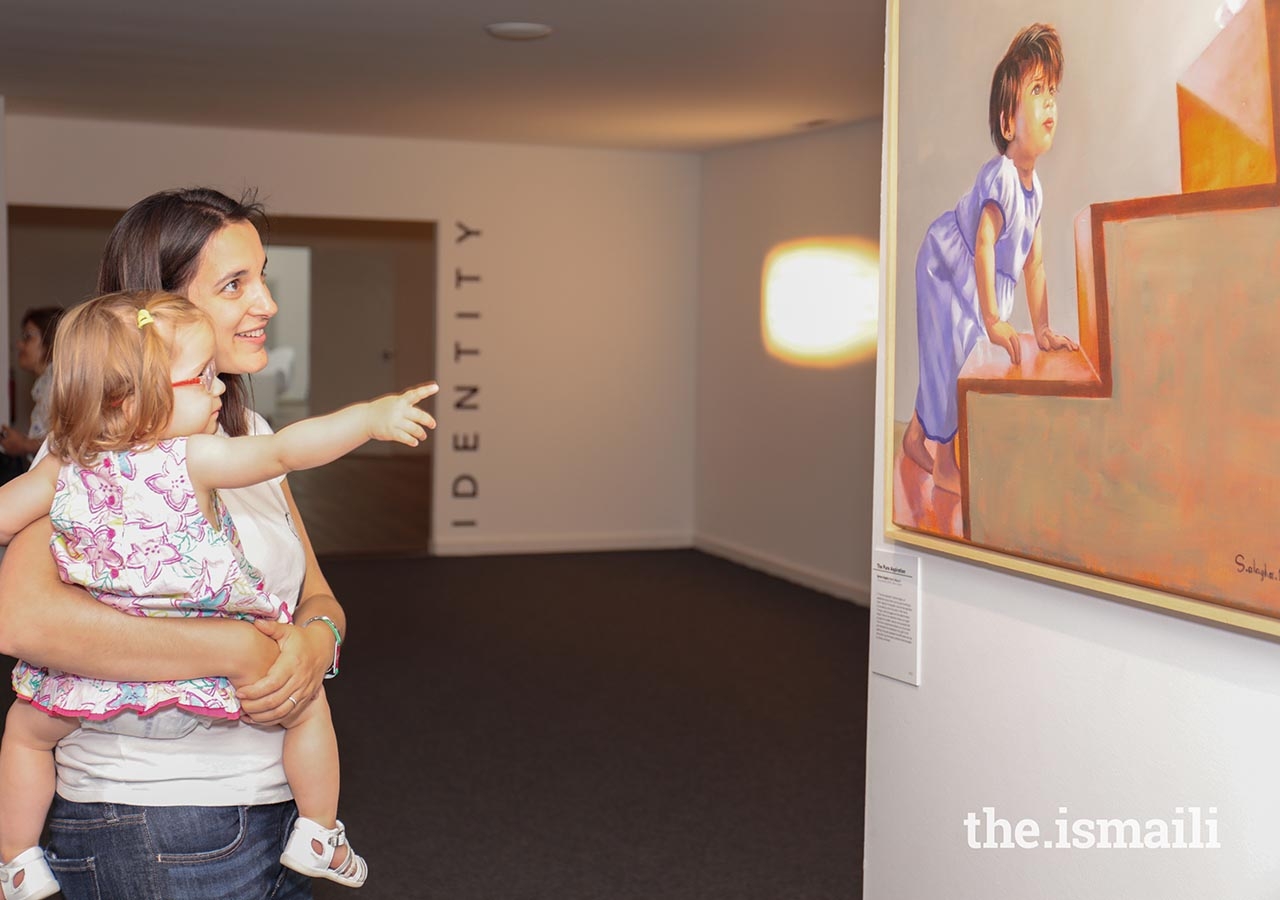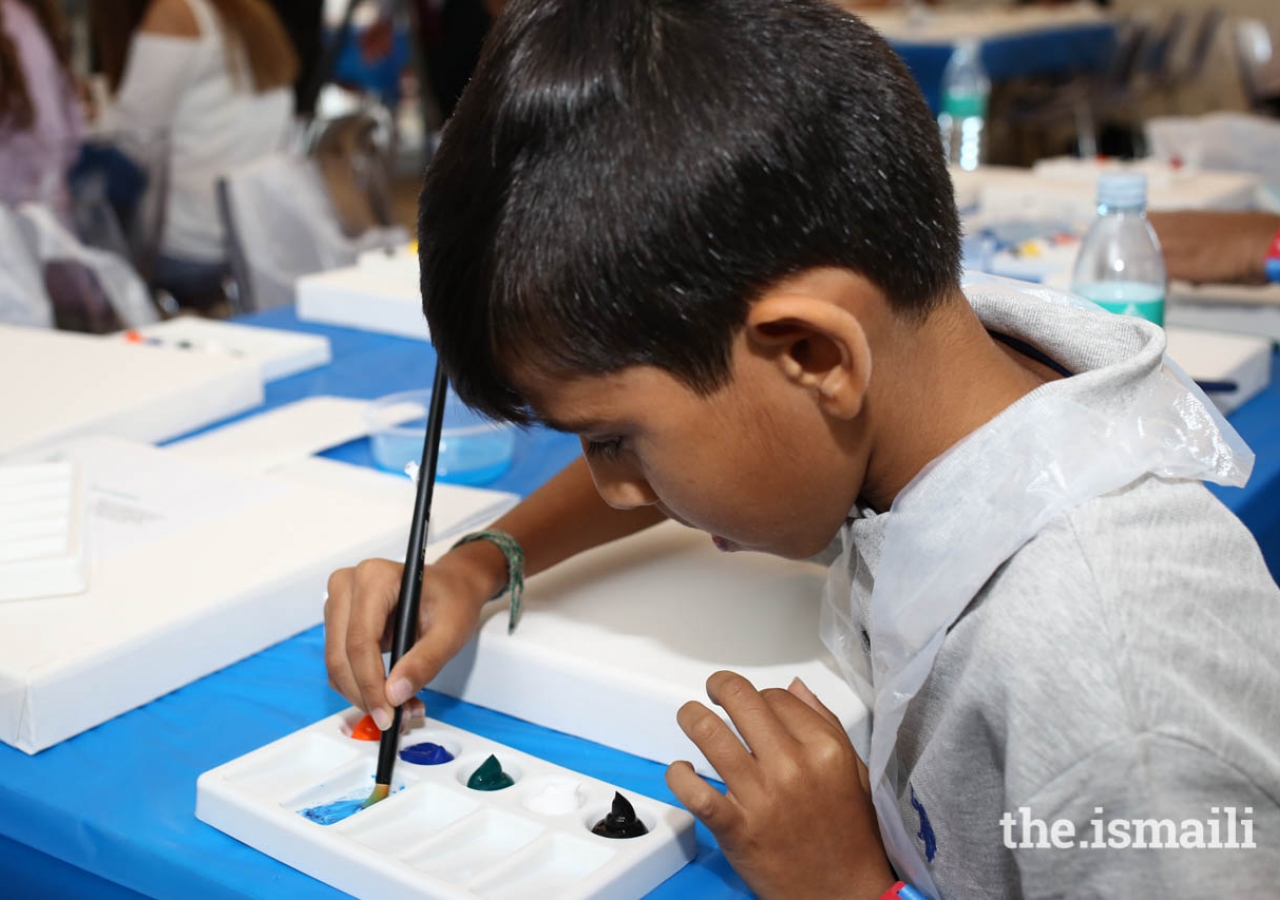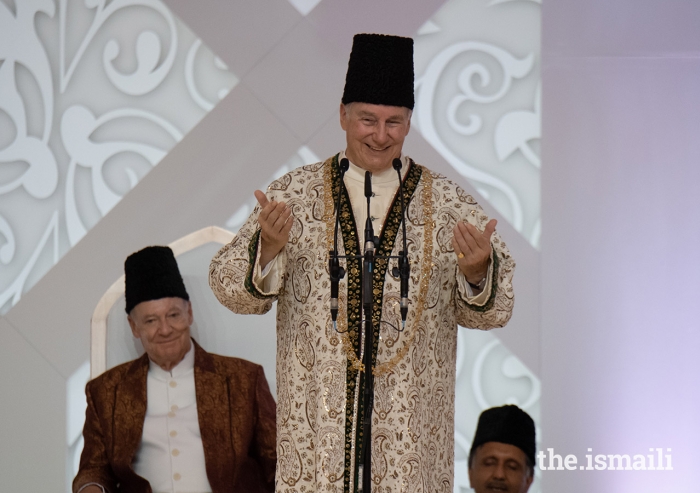Gallery Director Zainub Verjee’s vision was to create a space that would “elevate the current understanding of art, so that those who view the works would leave with a greater sense of cultural literacy.” She commented that, “these art pieces give a glimpse into how the artists are rooted in their community and how this relates to what is happening globally.”
The works of novice and professional artists were organised by four themes: imagine, heritage, community, and identity. The exhibit’s curator, Narendra Pachkhede, pointed out that these four keywords resonate throughout the gallery, connecting the pieces to one another and to the viewer, and acting as four wheels to transport viewers through the gallery.
During a guided tour, Narendra used portraits as a way to point out the similarities and unique qualities in some of the displayed pieces. He stated though we engage with the idea of portraiture in our everyday lives - a passport photo or a selfie - these works in the gallery that are using portraits in a variety of mediums engage in a complex set of ideas.
Syrian art educator and artist Shahenaz Yazje created a three-dimensional portrait of her grandmother using sawdust, glue, and paint as her medium. Shahenaz’s family and community were her inspiration for this portrait which captures intricate facial details and life-like expressions.
Anita Shamsher’s work titled “Legacy” also portrayed her grandmother, but this artist utilised coloured wool and the centuries old technique of Namda. It was Anita’s grandmother who taught her the use of wool in Northern Pakistan, and whose memory along with her family’s legacy of handcrafting inspired this art piece.
On another wall, a collection of portraits documented and educated viewers on the “Children of Black Dust”. Shehzad Noorani used photographs to capture the suffering of impoverished children in battery recycling facilities in Bangladesh, and the subsequent social and health implications of this hazardous environment. Shehzad’s work is used by various aid agencies to document the plight of children and women in such conditions.
Language was not a barrier in understanding the sentiments behind Syrian-born artist Awos Ward’s wooden sculpture, titled “The Return”. The artist spoke to viewers in Arabic about the individual’s struggle to persevere through adversity. With the basics of food, clothing, education, and a strong sense of identity, his wooden model emerges with dignity, and hope for a bright and peaceful future.
A crowd gathered as Sahib Nazar, a self-taught, professional artist stood by his painting “The Light of Ruby”. He explained how his play with light and darkness brings alive the broad brush strokes of colour on the canvas, and how this is analogous to uniting all the “colours” as one global Jamat.
The recognition and appreciation of Sahib’s work by viewers left him energised. The Afghan-born artist, currently living in the United States said, “I am mentally recharged… my brain is now fully charged. When I go back home I am sure I will create masterpieces, because masterpieces are created when we get energy and motivation. This kind of motivation I have never had before.”
Jameel Kanji from Toronto, Canada took the opportunity to tour the gallery twice. He said, “I am blown away by how neatly the work has been organised. There are certain pieces that you get immediately drawn to because they are visually striking. Then there are other pieces that you may walk by, but when you read the description, you realise that there is so much depth to those pieces. When you take a second look at the art piece, you are able to connect with the message that the artist is trying to convey.”
Moved by the collection Aliya Ismail said, “This is so incredible, and beyond amazing to see all this talent. The artists managed to express themselves in such different ways. The diversity in the exhibit is unbelievable; there is diversity in media, diversity in the artists’ motivations and diversity in the artist’ backgrounds. I have never seen anything like this, and I feel blessed that we are able to see all this art from our brothers and sisters around the world.”














